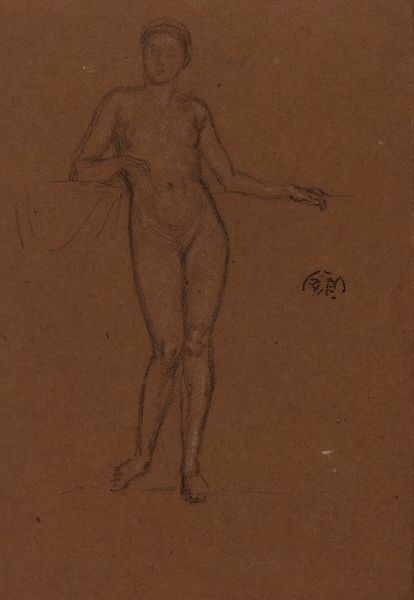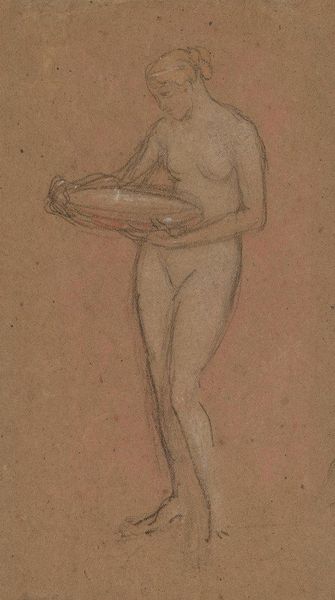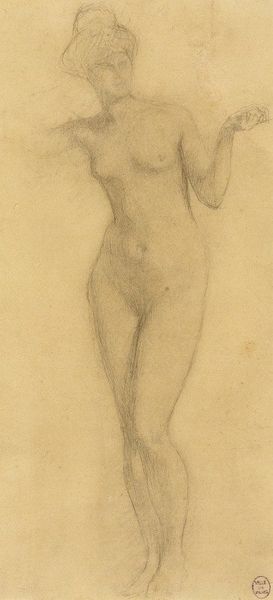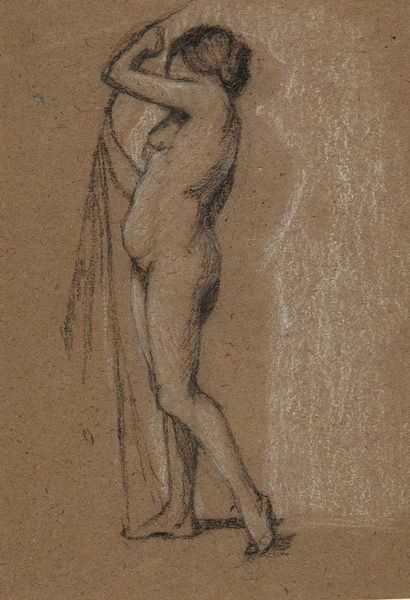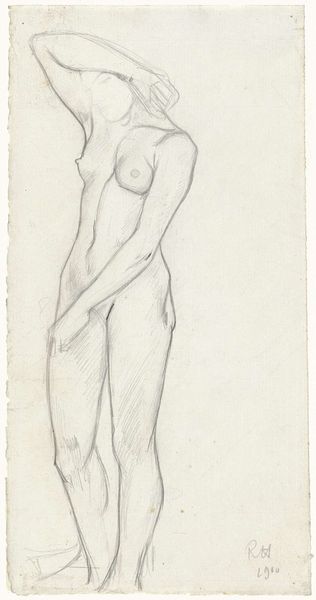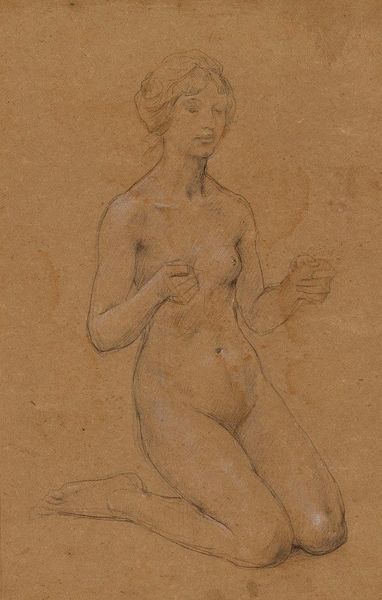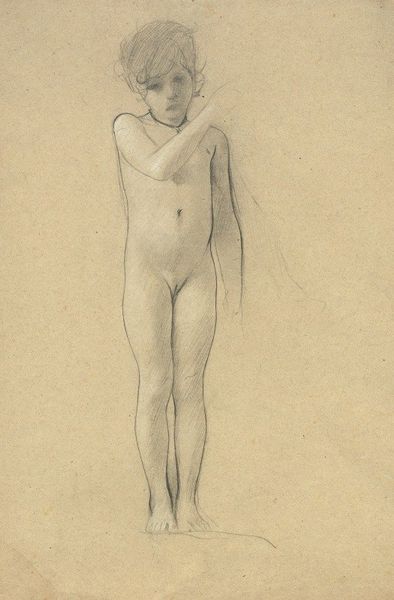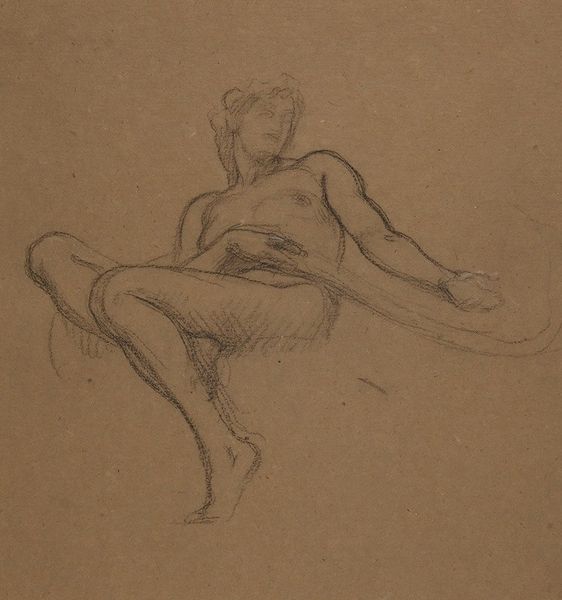
drawing, graphite
#
portrait
#
drawing
#
graphite
#
academic-art
#
nude
Copyright: Public Domain: Artvee
Curator: Immediately, this drawing evokes a feeling of vulnerability and almost careless beauty, doesn't it? The way she casually holds her pose... Editor: It is a study in contrasts. The raw physicality is mediated through careful composition. Here we have James Abbott McNeill Whistler's "Nude Standing with Legs Crossed," a graphite drawing circa 1878. Curator: Whistler always had a knack for catching these ephemeral moments. There's such a looseness, an immediacy in the lines; you can almost feel the model shifting her weight. He saw her not just as an object, but as a human being simply being herself. It's funny because the bare simplicity screams volumes compared to heavily embellished depictions of the time. Editor: Indeed. Whistler harnesses the principle of "less is more." Notice the economy of line, how graphite models volume while maintaining a distinct linear quality. There’s an emphasis on formal relationships. The crisscrossing of the legs, the arm angled across her waist creates visual tension within the frame and serves a deliberate compositional purpose, it isn't a painting of nothing, despite appearances! Curator: True. You've got that dynamic balance even with the stillness. The slightly tilted head gives her a sense of self-awareness and maybe it's this element that really invites you to ponder her story, like she is caught thinking. Editor: Quite, she stands poised both literally and metaphorically. And with the use of academic techniques to depict the body and nude figure we enter an art-historical and political discourse surrounding beauty, representation, and viewership. Whistler certainly adds complexity to these concepts by rendering such intimate depictions that challenge expectations within conventional artwork standards. Curator: What lingers for me is this sense of capturing a soul in a simple stance; a moment outside performance. The artist is showing a private narrative—not about flawless rendering, or grand storytelling but simple emotion with light deft touches. Editor: Yes. Though minimalist on its face this figure encapsulates nuanced reflections on beauty. With its careful strokes Whistler grants the model dignity while simultaneously encouraging reflection by his viewers regarding the themes inherent within classical depictions. Ultimately one wonders which goal serves best—art or idea of one? It may be hard or useless at finding answer since our human souls may have distinct notions.
Comments
No comments
Be the first to comment and join the conversation on the ultimate creative platform.
